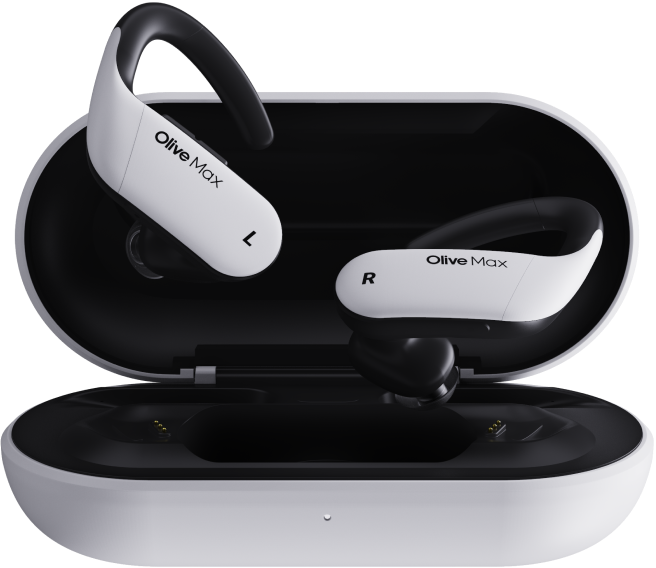
At first glance, cochlear implants and bone anchored hearing aids (BAHA) may appear to be similar. Both have a surgically implanted component, and both are used to treat forms hearing loss. However, the two devices are different in how they function and the types of hearing problems they are used to overcome.
A Brief History of Cochlear Implants & BAHA

Research on the technology behind cochlear implants began in the 1950s, but it wasn’t until the mid-1980s that the implants were approved by the FDA and became commercially available. They are used in cases where the hair cells in the cochlea of the inner ear are damaged and can no longer transmit sound to the auditory nerve.
Cochlear implants critically do not restore hearing – they merely simulate hearing in a different way and therefore require therapy and retraining in order for the recipient to understand speech and other sounds.
Bone anchored hearing aids, on the other hand, are a more modern technology. They have been in use since 1977, but didn’t receive approval by the FDA for the treatment of conductive hearing loss until 1996; they were approved again by the FDA in 2002 for the treatment of unilateral sensorineural hearing loss (also known as single-sided deafness).
How Bone Anchored Hearing Aids Work
Bone anchored hearing aids essentially work on the principle of bone conduction; the conduction of sound waves by vibrating skull bones. These vibrations are sent directly to the inner ear, bypassing the normal external and middle ears, which may be damaged in some way and unable to function normally.
A bone anchored hearing aid is composed of three components: a titanium implant, external abutment, and a sound processor. Sound transmission through the bones is natural, but a bone anchored hearing aid enhances that to direct sound to the inner ear without the need for it to pass through the ear canal and middle ear.
The titanium implant is surgically implanted; over time it fully integrates with the surrounding skull bone. The sound processor picks up speech and environmental sounds and transmits them to the external abutment which is connected to the titanium implant. These vibrations travel to the inner ear, allowing them to stimulate the auditory nerve, which the brain then processes as natural sound.
The main difference between cochlear implants and bone anchored hearing aids is that cochlear implants treat sensorineural hearing loss (hearing loss due to damage in the inner ear) and bypass the outer, middle, and inner ear to transmit electrical impulses directly to the auditory nerve.
Bone anchored hearing aids treat conductive hearing loss (hearing loss due to problems with the outer and middle ears) and bypass only the outer and middle ear to deliver sound waves to a functioning inner ear.
As a result, cochlear implant users perceive simulated sound but bone anchored hearing aids truly “hear” through the use of their device.
Who Can Benefit from BAHA?

Bone anchored hearing aids are used to help people who cannot benefit from traditional hearing aids: people with chronic ear infections or defects to the ear canal, whether from birth defect or injury.
Some people have good nerve function in the inner ear, but have issues in the outer or middle ear that makes wearing hearing aids problematic. This is often due to either chronic ear infections or the presence of very narrow ear or malformed ear canal due to injury or birth defect.
People with chronic infection of the outer or middle ear often experience a persistent and unpleasant discharge. For people in this situation, using a hearing aid can make the infections worse because the ear canal becomes obstructed by the hearing aid, which increases humidity and prevents drainage of the infection.
For these people, a bone anchored hearing aid is a good solution because sound is transmitted directly to the inner ear via vibrations in the skull, which leaves the ear canal unobstructed. People experiencing more severe hearing loss may particularly benefit from bone anchored hearing aids because the device doesn’t have the problem with feedback and discomfort related to increased amplification in traditional hearing aids.
BAHA For Treating Single-Sided Deafness
Single sided deafness (also sometimes called unilateral hearing loss) can be caused by a number of factors including viral infections, trauma, tumors, ear infections, or surgery. People experiencing single-sided deafness may find that one ear is not adequate to hear in many situations, such as when trying to have a conversation with background noise present (such as in restaurants or other public areas), or trying to determine in which direction sound is originating.
With the recent approval by the FDA of bone anchored hearing aids to treat single-sided deafness, many people with this problem now have a solution. The bone anchored hearing aid is implanted on the side of the deaf ear, where it picks up sounds and transmits them to the inner ear of the normal hearing ear.
This essentially provides the sensation of hearing from the deaf ear; this stereo hearing allows people to improve their ability to isolate speech within background noise as well as determine the direction of sound.
https://www.healthyhearing.com, https://stvincentsent.com.au, https://www.umms.org, http://www.differencebetween.net, https://www.hopkinsmedicine.org, https://www.nidcd.nih.gov









